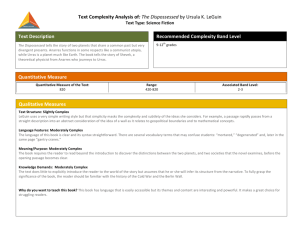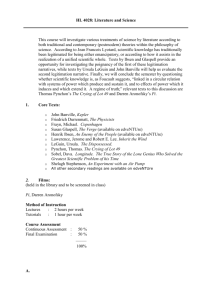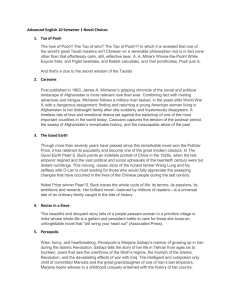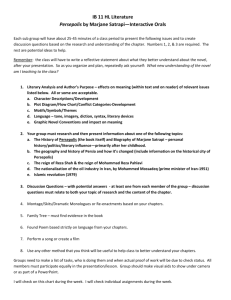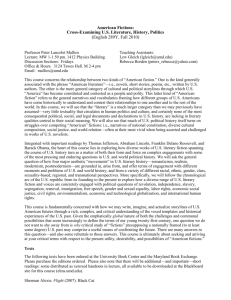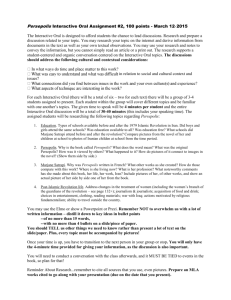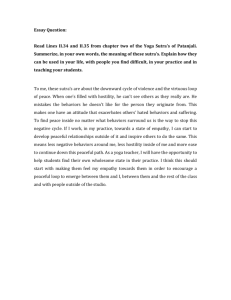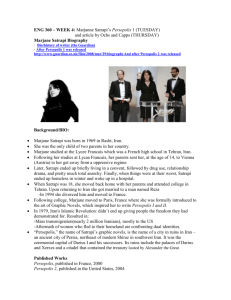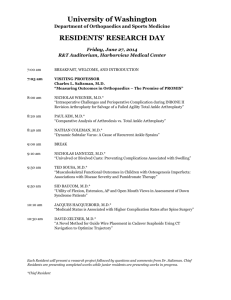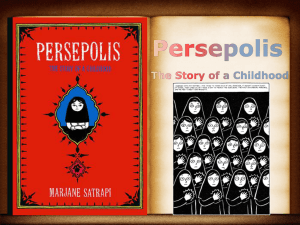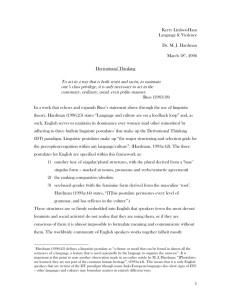Religion in Contemporary Fiction
advertisement
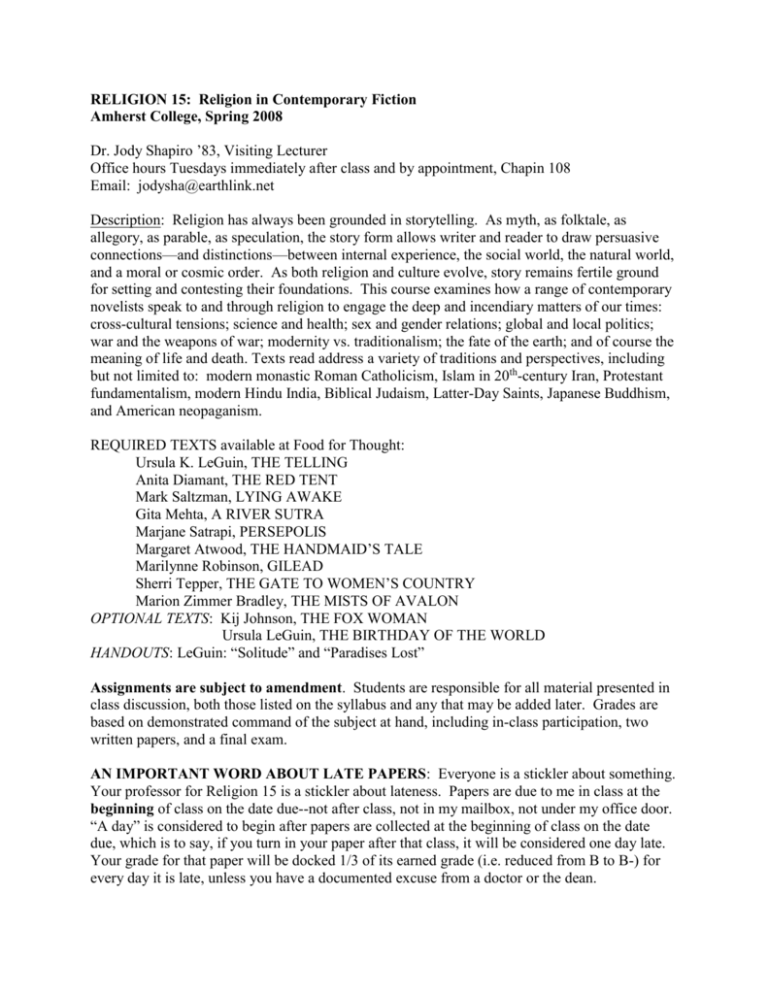
RELIGION 15: Religion in Contemporary Fiction Amherst College, Spring 2008 Dr. Jody Shapiro ’83, Visiting Lecturer Office hours Tuesdays immediately after class and by appointment, Chapin 108 Email: jodysha@earthlink.net Description: Religion has always been grounded in storytelling. As myth, as folktale, as allegory, as parable, as speculation, the story form allows writer and reader to draw persuasive connections—and distinctions—between internal experience, the social world, the natural world, and a moral or cosmic order. As both religion and culture evolve, story remains fertile ground for setting and contesting their foundations. This course examines how a range of contemporary novelists speak to and through religion to engage the deep and incendiary matters of our times: cross-cultural tensions; science and health; sex and gender relations; global and local politics; war and the weapons of war; modernity vs. traditionalism; the fate of the earth; and of course the meaning of life and death. Texts read address a variety of traditions and perspectives, including but not limited to: modern monastic Roman Catholicism, Islam in 20th-century Iran, Protestant fundamentalism, modern Hindu India, Biblical Judaism, Latter-Day Saints, Japanese Buddhism, and American neopaganism. REQUIRED TEXTS available at Food for Thought: Ursula K. LeGuin, THE TELLING Anita Diamant, THE RED TENT Mark Saltzman, LYING AWAKE Gita Mehta, A RIVER SUTRA Marjane Satrapi, PERSEPOLIS Margaret Atwood, THE HANDMAID’S TALE Marilynne Robinson, GILEAD Sherri Tepper, THE GATE TO WOMEN’S COUNTRY Marion Zimmer Bradley, THE MISTS OF AVALON OPTIONAL TEXTS: Kij Johnson, THE FOX WOMAN Ursula LeGuin, THE BIRTHDAY OF THE WORLD HANDOUTS: LeGuin: “Solitude” and “Paradises Lost” Assignments are subject to amendment. Students are responsible for all material presented in class discussion, both those listed on the syllabus and any that may be added later. Grades are based on demonstrated command of the subject at hand, including in-class participation, two written papers, and a final exam. AN IMPORTANT WORD ABOUT LATE PAPERS: Everyone is a stickler about something. Your professor for Religion 15 is a stickler about lateness. Papers are due to me in class at the beginning of class on the date due--not after class, not in my mailbox, not under my office door. “A day” is considered to begin after papers are collected at the beginning of class on the date due, which is to say, if you turn in your paper after that class, it will be considered one day late. Your grade for that paper will be docked 1/3 of its earned grade (i.e. reduced from B to B-) for every day it is late, unless you have a documented excuse from a doctor or the dean. SYLLABUS January 29 We begin. LeGUIN: THE TELLING Jan 31, Feb 5 Part One: Modern Times SALTZMAN: LYING AWAKE Feb 7, 12 MEHTA: A RIVER SUTRA Feb 14, 19, 21 SATRAPI: PERSEPOLIS Feb 26, 28, March 4 First Paper Due March 4 Part Two: Futures ATWOOD: THE HANDMAID’S TALE March 6, 11, 13 SPRING BREAK March 15-23 TEPPER: THE GATE TO WOMEN’S COUNTRY March 25, 27, April 1 LEGUIN, “Solitude” and “Paradises Lost” (handout and in LEGUIN: THE BIRTHDAY OF THE WORLD which will be available at Food for Thought) April 3 Second Paper Due April 8 Part Three: Pasts DIAMANT: THE RED TENT April 8, 10, 15 ROBINSON: GILEAD April 17, 22, 24 BRADLEY: THE MISTS OF AVALON April 29, May 1, May 6 May 8 We catch up, we sum up. Final Exam date/time to be announced
